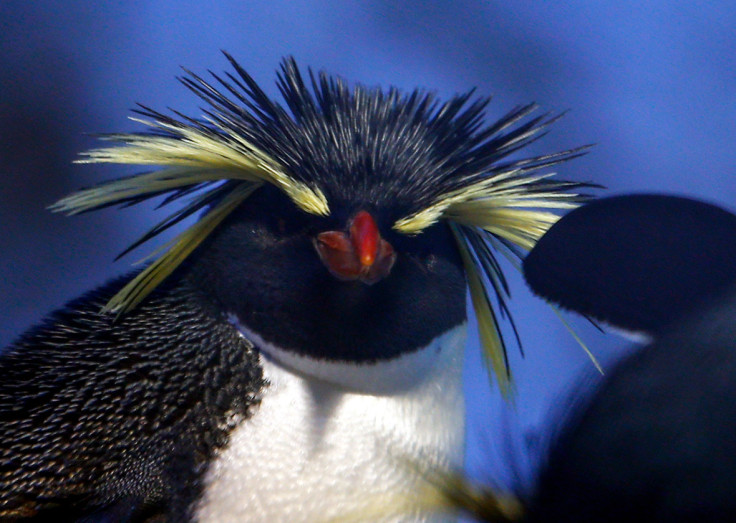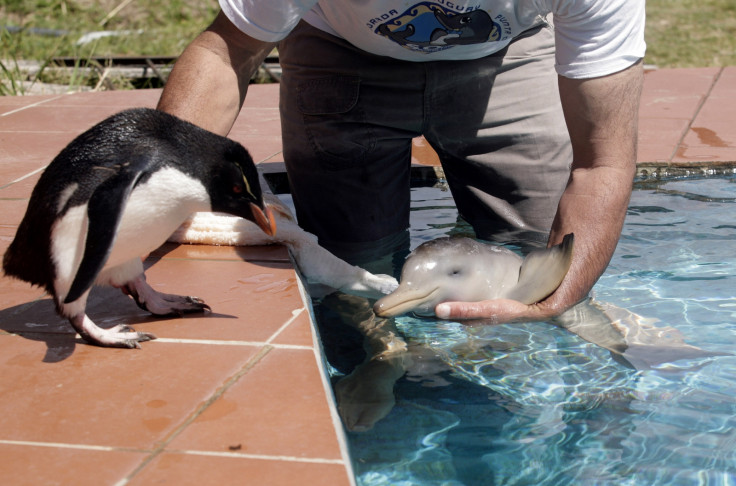World Penguin Day 2017: The 5 most endangered species
Climate change is the major reason behind falling populations of these flightless birds.

World Penguin Day is celebrated each year on 25 April to shed light on the issues facing one of nature's most intriguing birds. The date is chosen to coincide with the time Antarctic penguins start their annual migratory trip north.
Penguins' colony culture, monogamous relations, individually identifiable calls and brilliant agility in water make them unique birds. Without robust conservation actions, many penguin species will soon become extinct.
Found almost exclusively in the Southern Hemisphere, these aquatic birds are under severe threat due to climate change and the melting ice caps. Ocean contamination is also leading to a fall in populations of some species, along with the overfishing and urbanisation that is disrupting their prey's life and causing a decline in food sources.
On World Penguin Day, IBTimes UK lists the five most endangered of the surviving 17 species from around the world as per their conservation status identified by the Red List of the International Union for the Conservation of Nature.
Galapagos Penguin
This is the only penguin species that lives outside the Southern Hemisphere. Endemic to the Galapagos Islands, these birds average 49cm in height and weigh approximately 2.5 kilograms. Considering their small size, they are easy targets for predators like rats, cats, hawks, owls and snakes.
Climate plays a major role in the survival and breeding of this species. Living in a warmer region, the Galapagos penguins cool off in the water. Breeding is also stimulated by a drop in sea surface temperatures to below about 24 degrees Celsius. With global warming, the water temperatures in the region have been rising consistently, putting these birds at risk of extinction.
African Penguin
These penguins are found on the south-western coast of Africa and are slightly larger than the average Galapagos variety, measuring 60–70 cm and weighing 2.2 to 3.5 kilograms. Their braying calls have given them the nickname of the 'jackass penguin'.

Penguin eggs were considered a delicacy in the mid-20<sup>th century and led to widespread hunting. Commercial fishing, along with pollution and oil spills in surrounding waters, has also led to a fall in the numbers of African penguins.
Rockhopper Penguin

These penguins are made up of three separate but closely related species, found at the tip of South America and the Islas Malvinas (Falkland Islands). They are considered one of the smallest species of penguin in the world, with full-grown adults weighing 2.3-2.7kg and measuring 20 inches in height. Physical characteristics that differentiate Rockhoppers from other penguin species include their red eyes, orange beak and pink-webbed feet.
Erect-crested Penguin

Found across the Bounty and Antipodes Islands in New Zealand, the erect-crested penguin is one of the lesser-known species and little information is available as to its biology and breeding patterns. Changes to its small breeding region have led to a drop in numbers.
Yellow-eyed Penguin
A native of New Zealand, this species has a pale yellow head and paler yellow irises. It is considered one of the world's rarest penguin species and is faces threats from habitat degradation and introduced predators.

© Copyright IBTimes 2025. All rights reserved.






















